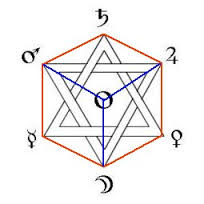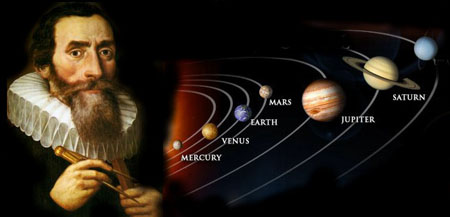

Pythagorean teaching – From this comes the great occult axiom: “The center is the father of the directions, the dimensions, and the distances.”
This cube represents six points with man in the middle.
Seven Planetary Spheres
Ancient Greeks taught that souls come to the earth from, and return to the Milky Way via seven planetary spheres – those being Saturn, Jupiter, Mars the Sun, Venus, Mercury and the Moon. In the image above we see the stars and signs of the zodiac at the top, Saturn through Mercury down the back of the chair, the Moon in the sky and Earth in his hands.
The logic of this order doesn’t appear to make sense until you look at an image which shows the spheres mapped onto the seven points (including the center) of a hexagram. Note how the sun (symbolized by a point in a circle) is at the center of this diagram and how the planets are divided with the outer ones being ‘above’ the sun.































